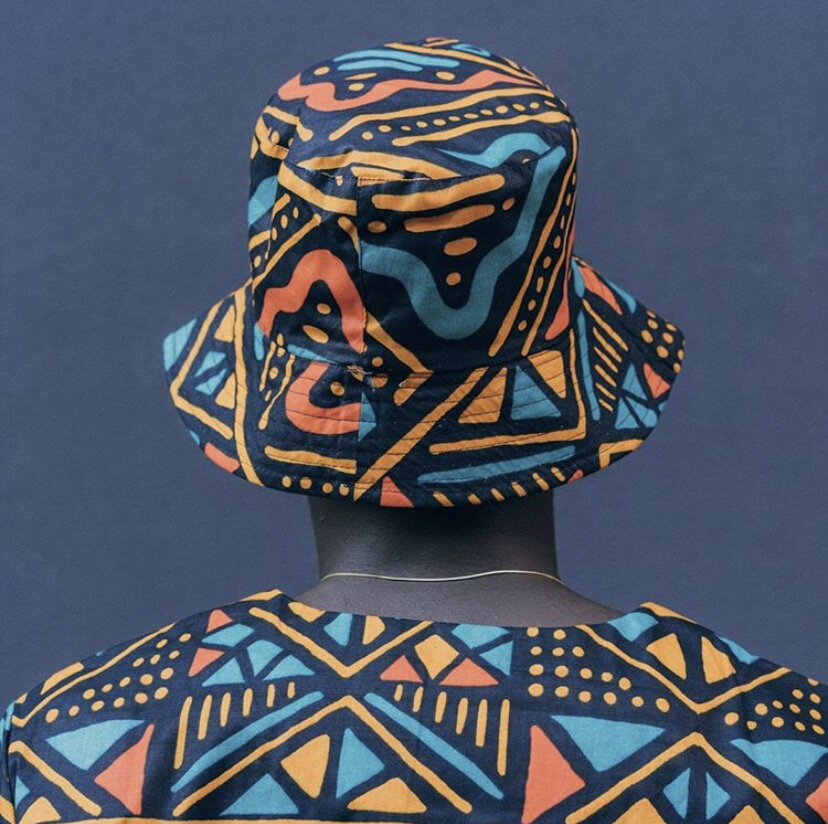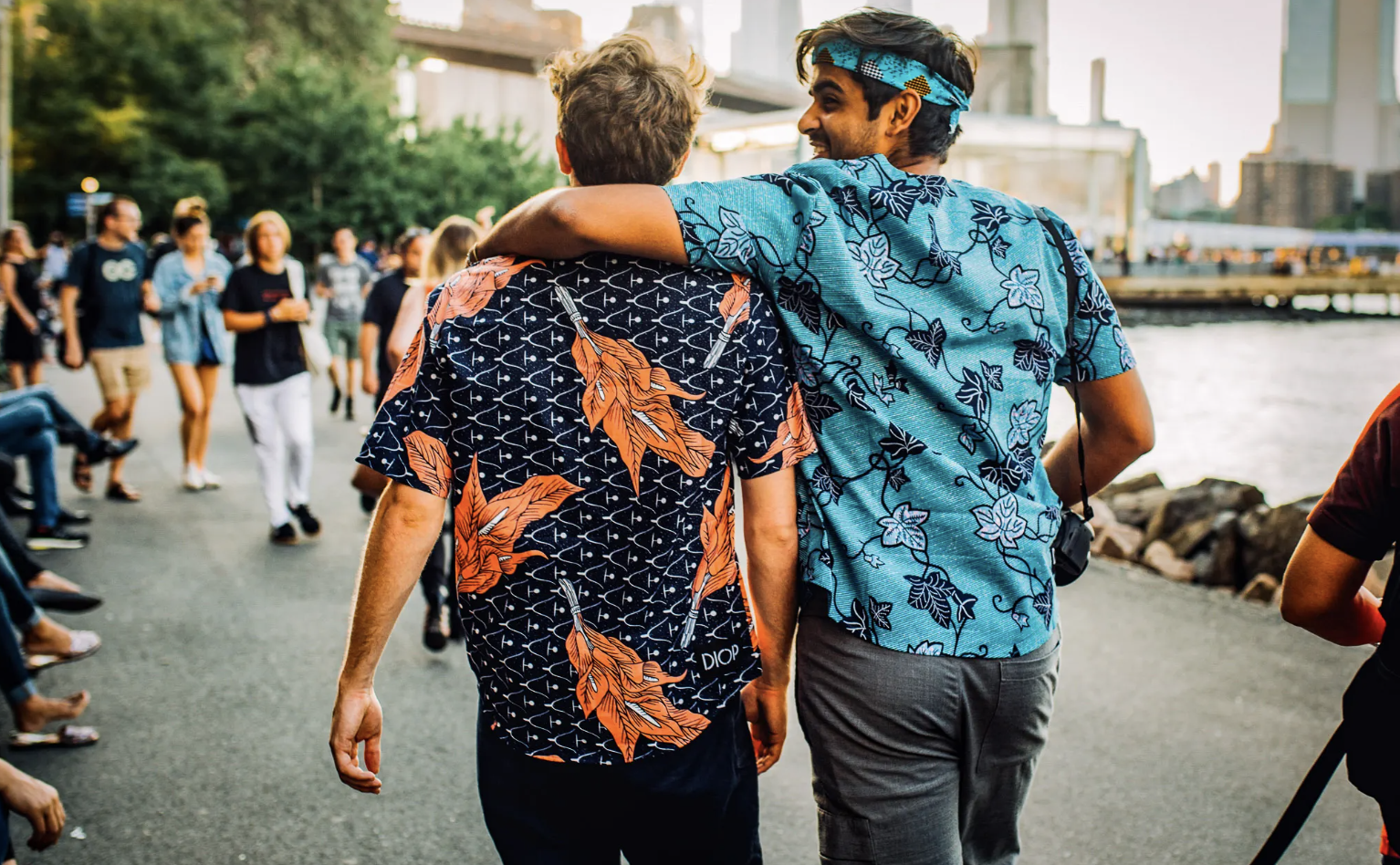DIOP
Living between heritage and lifestyle.
Photo Courtesy: DIOP.
Throughout history items of clothing have created a strong bond between people and their heritage. Tradition reflects not only on the worn garment but in everything it involves; from the weaving of the textiles, the dying of the fabrics to the sewing of the garment. Technique is passed on generation to generation to ensure heritage is kept alive.
In today’s world there is a strong desire to connect to our origins, we keep looking and finding ways to represent who we are and show ourselves to the world. Our roots connect us to one another and creative brands like DIOP have found the way to bring out traditional textile techniques into fashion while creating community through inclusivity.
We sat down with Mapate Diop co-founder of DIOP to talk about his journey, the success of the brand and the importance of creating inclusivity through a brand that clearly reflects his African and Indonesian roots.
Tell us a bit about your story and the motivation behind DIOP.
I'm from New York City. Growing up, Mom would travel to West Africa and buy fabric to bring home, find a tailor and make clothes from. After college, I joined a fellowship program called Venture for America where recent graduates work at startups and emerging businesses. My friend Evan, who's also a VFA fellow, came up to me at a barbecue and asked where I got the shirt I was wearing from. I was wearing one of these shirts my Mom had gotten made and Evan inquired if there was a way to make it ourselves. After six months of making prototypes, we launched a crowdfunding campaign after the recommendation of a friend. With the money we raised, we left our jobs and moved to Detroit to join a startup accelerator. We launched our first collection on September 20, 2018 and we're releasing our fourth as we speak.
What was the process of building the brand like and turning it into a sustainable and successful business?
The process is building community. We have the privilege of meeting a lot of different people from various backgrounds with many interests. Whether they are customers or partners, someone who has shot photos for us or modeled our clothing, or even just someone reaching out to offer a kind word, they really drive us forward. They give what we make meaning and when it comes to work, it's tough to imagine a purpose better than that. For example, with the masks we started making in March, we've been able to donate over $100,000 to over 50 different local, regional and national relief efforts and charitable initiatives focusing on COVID relief. We feel very fortunate at this very moment to continue to make products that people not only like but helps them feel like themselves. And while we wish it were under better circumstances, we're happy to help in our own small way. There are lots of people who serve our communities day in and day out with little fanfare and we're proud to support their efforts, especially at a time like this.
Photo Courtesy: DIOP.
How does your heritage translate through the brand?
The heritage translates through the brand in the broad range of prints we source. The bright colors and bold patterns help our products stand out. The flexibility of working with wax print, mud print, and dutch wax allows us to add a little more flair and make something people want to wear and show off.
How is the creative process when coming up with a new collection or product?
Our goods are conceived, developed and driven with customers. Our shorts, for example, were the first product we made outside of our tops or bandanas, which we had been selling for a year. We put them through the ringer during testing; we wore them for days on end, worked out in them. We were concerned about their durability. We were very worried they would rip. We were worried a 5 inch inseam might be too short for our customers so we settled on 7 inches. There's a lot of small details that go into things people wear and live in.
What brands, books and movies inspire you?
Professionally, I've learned a lot from independent record label XL Recordings, the show How To Make It In America, and Shoe Dog by Phil Knight. Each in it's own way is about learning to refine your instincts and apply yourself creatively when it comes to solving problems.
Your brand ethos speaks a lot about cultural appropriation, do you hope to educate people on this matter?
We don't educate people on cultural appropriation; we offer a position shared between both us as individuals and the brand itself. We don't think it’s appropriation to wear what we sell however we speak for ourselves. The page goes further into why and it mostly has to do with the nuances of what we're selling, how it's sold and to whom. Others are free to feel differently and or disagree. What makes the page work is that it puts into words what people feel or grasp intuitively, whether they are people of color or not. It's a thoughtful question that deserves an equal, if not more thoughtful interaction. It's not a permission slip to go out and do whatever you like; it's an entry point into an ongoing discussion that precedes us and we hope continues long past us. What's important is that everyone is welcome to think critically about the issue and what it means. Broadly speaking, we believe that's the first step to combating it.
Photo Courtesy: DIOP.
Tell us about the initiative of Diop Circle and the members of this community.
We spend a lot of time trying to find more ways for people to see themselves in our brand; one of those ways is hearing themselves. We simply turn over the keys to the platform for those around us to talk about what is meaningful to them. I find every one of them memorable; each feature is special in its own way. There's no prerequisite to the Community Story and we've been fortunate so far to include everyone who has asked. We typically start with a thirty to forty-five minute interview covering a wide range of topics but mostly focused on their lived experiences. Then we'll take the notes and create an outline to work from. They fill in the details and add more context through photos they provide. All told, it takes two to four weeks to put together.
What advice would you give to someone starting their own business with the hopes of building an inclusive brand like yours?
"Slow is smooth and smooth is fast." is something we say in regard to our work but can also apply outside of that. Overcoming challenges and solving problems can take time and that's okay, especially if learning is involved. There'll be mistakes but the key is to keep making new ones. And eventually you'll be shocked at how much progress you'll make.



